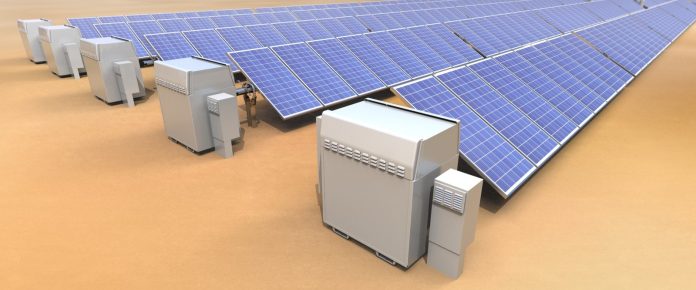Solar energy, as an alternative power source, has been gaining attention in recent years. Solar PVs (photovoltaics) are rising in adoption, and solar panels are the most common mode of energy conversion.
Solar energy can be significantly beneficial for our environment as carbon emission is reduced compared to electricity generated from fossil fuels.
The increasing cost of electricity is due to the rising electricity generation costs and a disorganized market due to multiple intermediaries in the operations.
There are different ways of storing solar energy in the solar energy storage market, it could either be chemical storage systems like batteries, thermal storage or CSP (concentrated solar power plants), or mechanical storage systems like a flywheel and compressed air.
Noticing this, people have started to store solar energy to use it during peak demand hours.
Electrochemical Storage Methods
- The most common type of power storage isa battery, also known as electrochemical storage. In this storage method, the electricity is stored inside the battery through a chemical reaction. The chemical reaction is reversed when the electricity is discharged.
- Thermal energy storage utilises fluids, such as water, molten salt, or other materials, to store energy. The fluid is boiled by using the heat from solar energy. The steam generated then propels a turbine and generates electricity using the same types of equipment used in conventional energy generation stations.
Mechanical Storage Methods
- Flywheel storage uses a wheel attached to a rotating shaft. The wheel is accelerated by expending electricity. The electricity can then be extracted by an electrical generator attached to the wheel, which slows down the wheel with the use of electromagnetism. However, this method is still developing and cannot store large amount of electricity.
- Compressed air storage system uses an underground reservoir and gas turbines to generate electricity during peak load requirements. The underground reservoir could be an aquifer or a hard rock cavity. This storage system is much more resilient and sustainable than batteries and requires lower maintenance costs.
With the growing adoption of solar PVs, people have started to store and sell energy. However, the energy market is constantly disrupted by the increasing costs of electricity generation through traditional methods, developing technology for solar power generation, and complex billing systems.
This is where blockchain can be utilized to change convoluted systems. Blockchain in energy utilities market can help in making streamline transactions, remove intermediaries, increase transparency due to decentralization, improve operation efficiency, and increase energy generators to consumer interaction.
But before blockchain implementation, it needs to resolve some crucial issues related to low computing power in transactions, lack of regulations, and others.
Nevertheless, this article is not about the challenges of blockchain implementation in utilities. So, let us look at some of the innovations and implementations of blockchain in the energy utility market.
Creating a Marketplace for Peer-to-Peer Trading
Peer-to-peer trading will improve energy distribution, as people would be able to buy and sell excess energy amongst themselves. Solar power generation is rising in adoption, and the number of prosumers is growing.
Currently, utility companies are buying their surplus energy at a very low price. But, with the implementation of the blockchain market for energy, true peer-to-peer trading can be enabled. This would also remove the intermediaries, reducing the energy cost for the consumers.
Demand Response Program for Consumers and Prosumers
A demand response program (DRP) would be created to incentivize consumers and prosumers by utility companies.
This program will let prosumers and consumers enroll in the program so they can receive incentives for providing flexible energy consumption at the request of utility companies. The blockchain DRP will connect the prosumer and consumer directly to the grid. The participation data will be stored as a digital identity.
Smart Metres
Currently, power consumption is recorded in intervals throughout the day. The information is transferred to the utility company after passing through many intermediaries.
With the implementation of smart meters, more accurate consumption readings can be done. The information will be stored in a distributed database allowing the utility to access all the information directly. This change will improve efficiency and streamline the transactions to utility companies, removing the involvement of intermediaries.
These are just the tip of the iceberg. As the blockchain system develops, more regulations are implemented, and more innovations will be made to improve market operations.
Many companies are already collaborating with experienced blockchain service providers to implement customized and customer-centric solutions. This will further add to the growth of the market.

